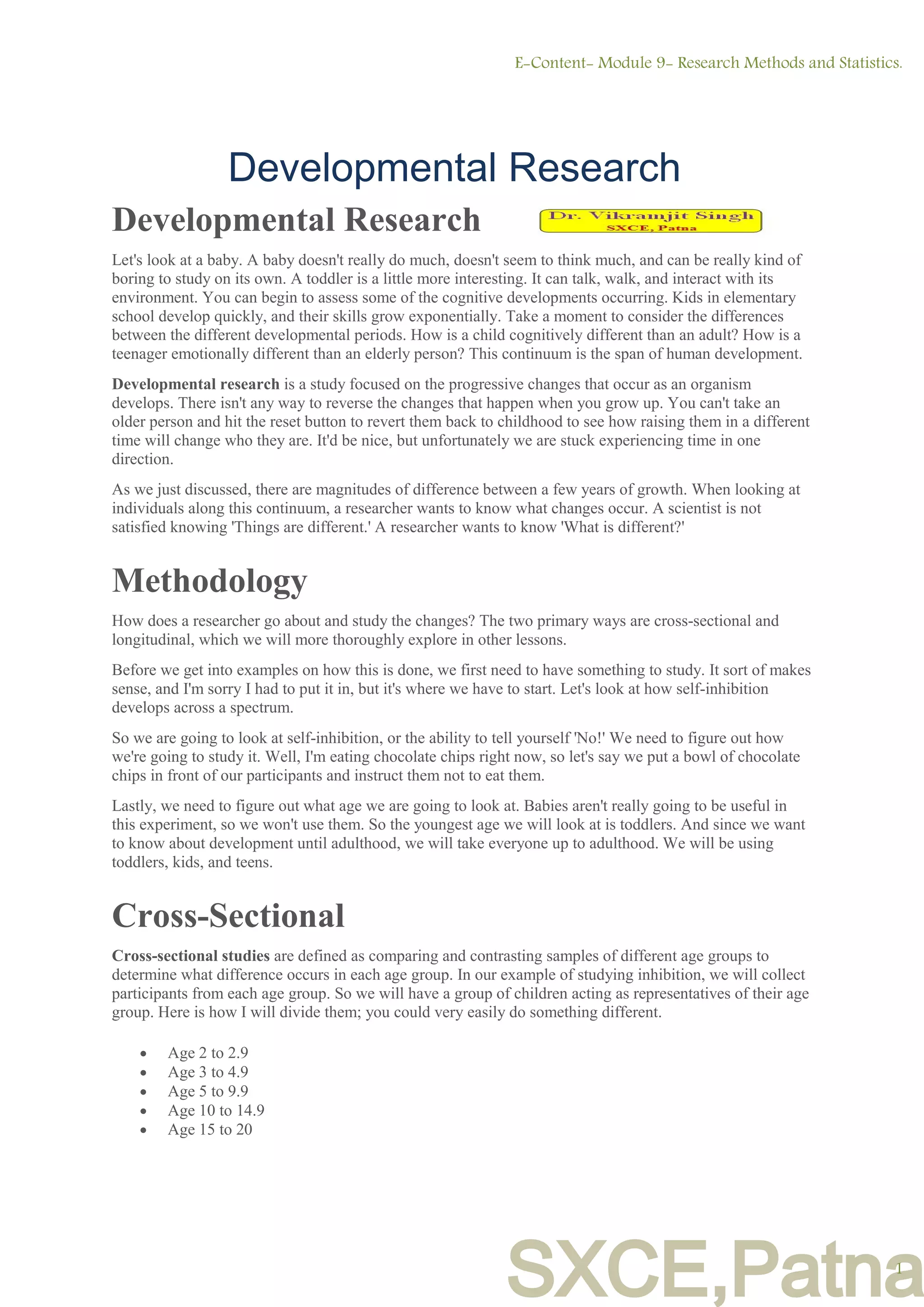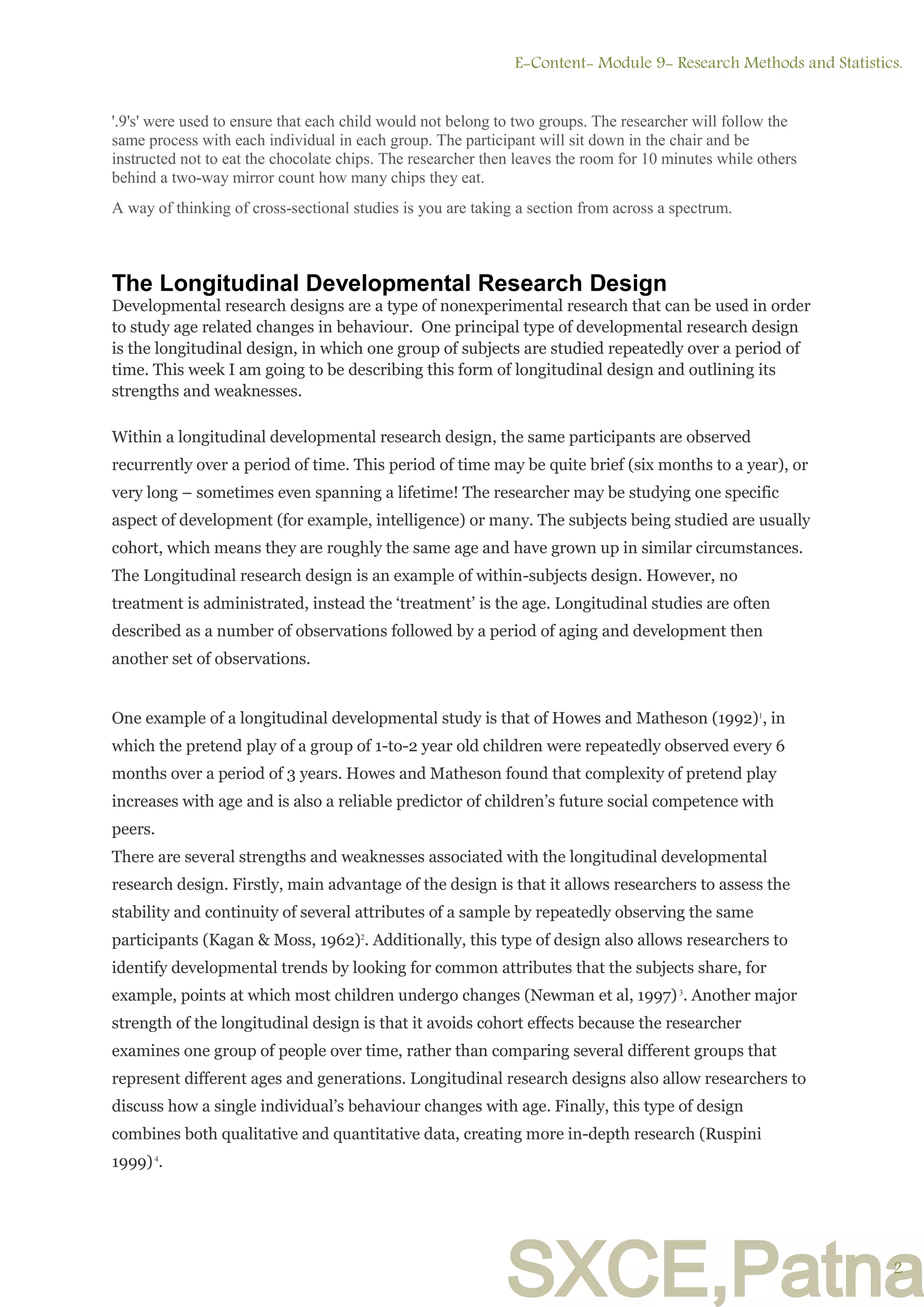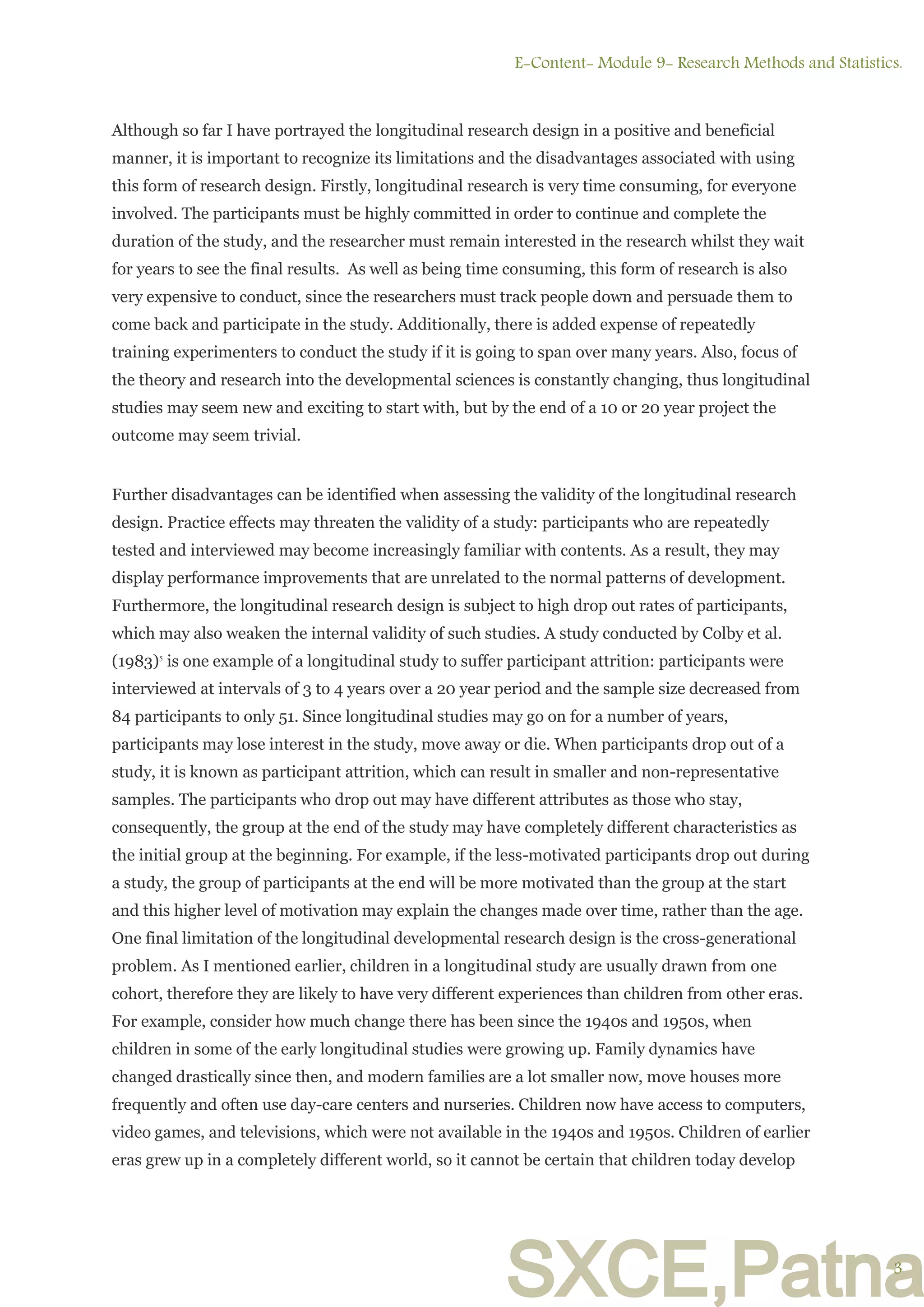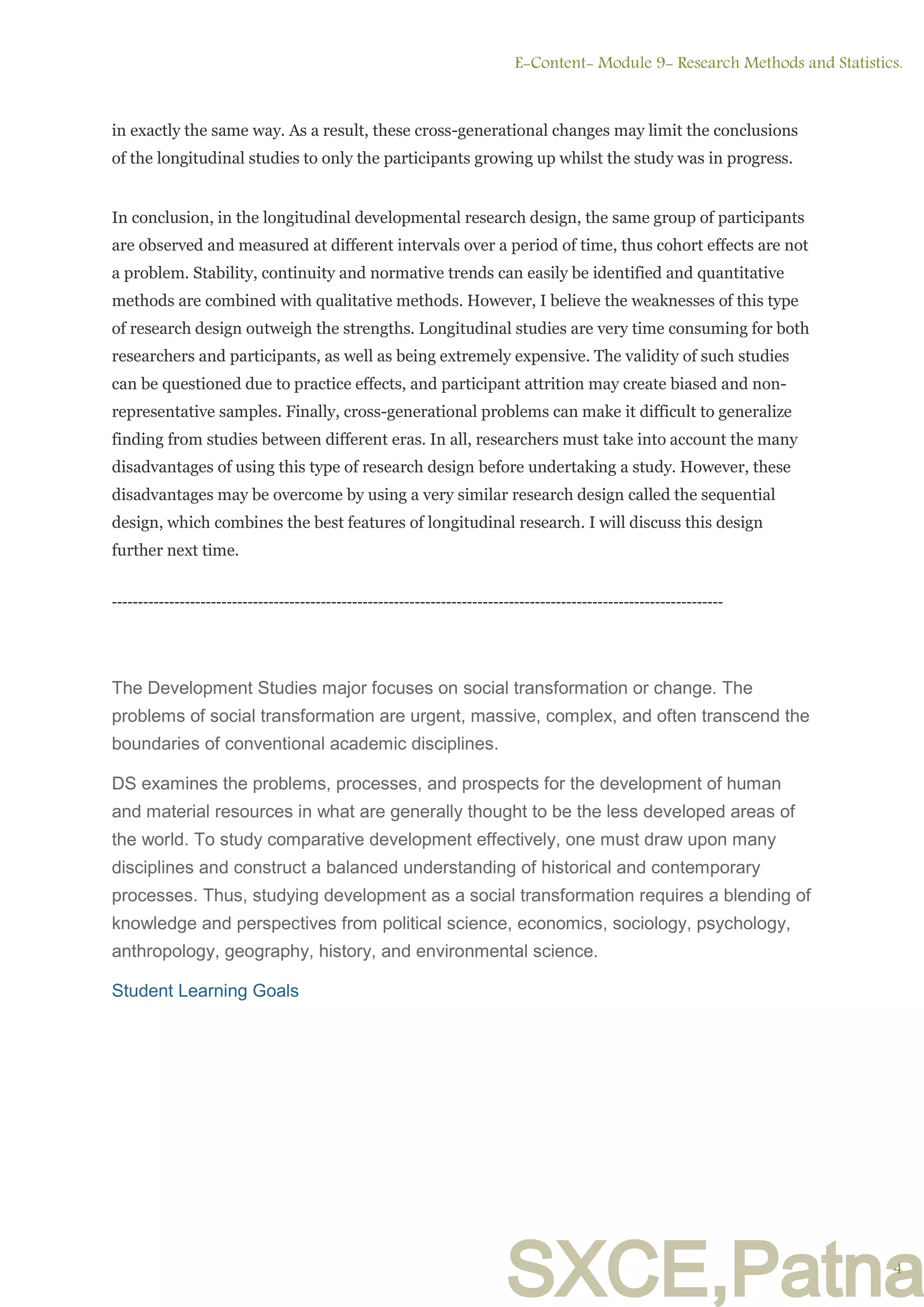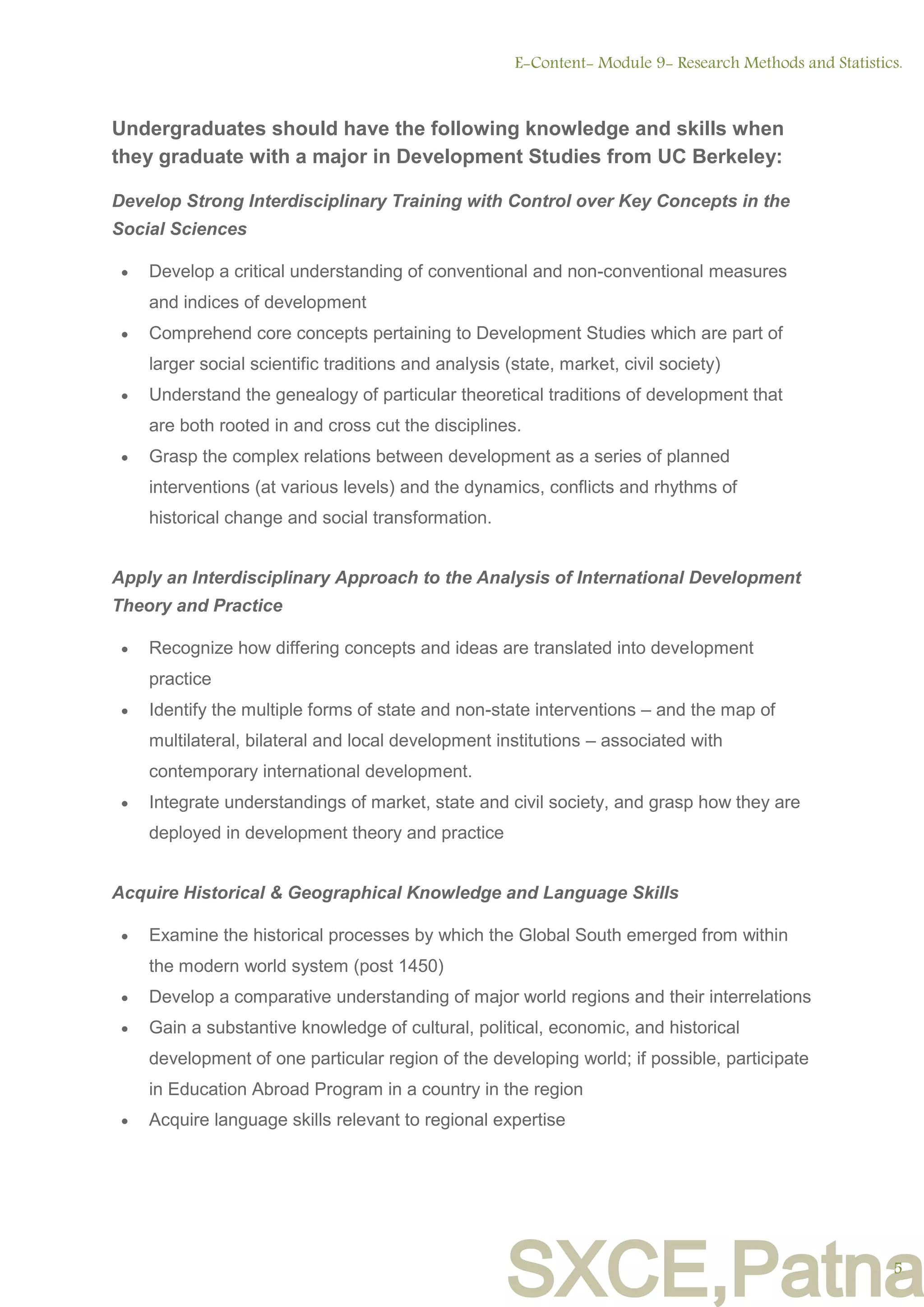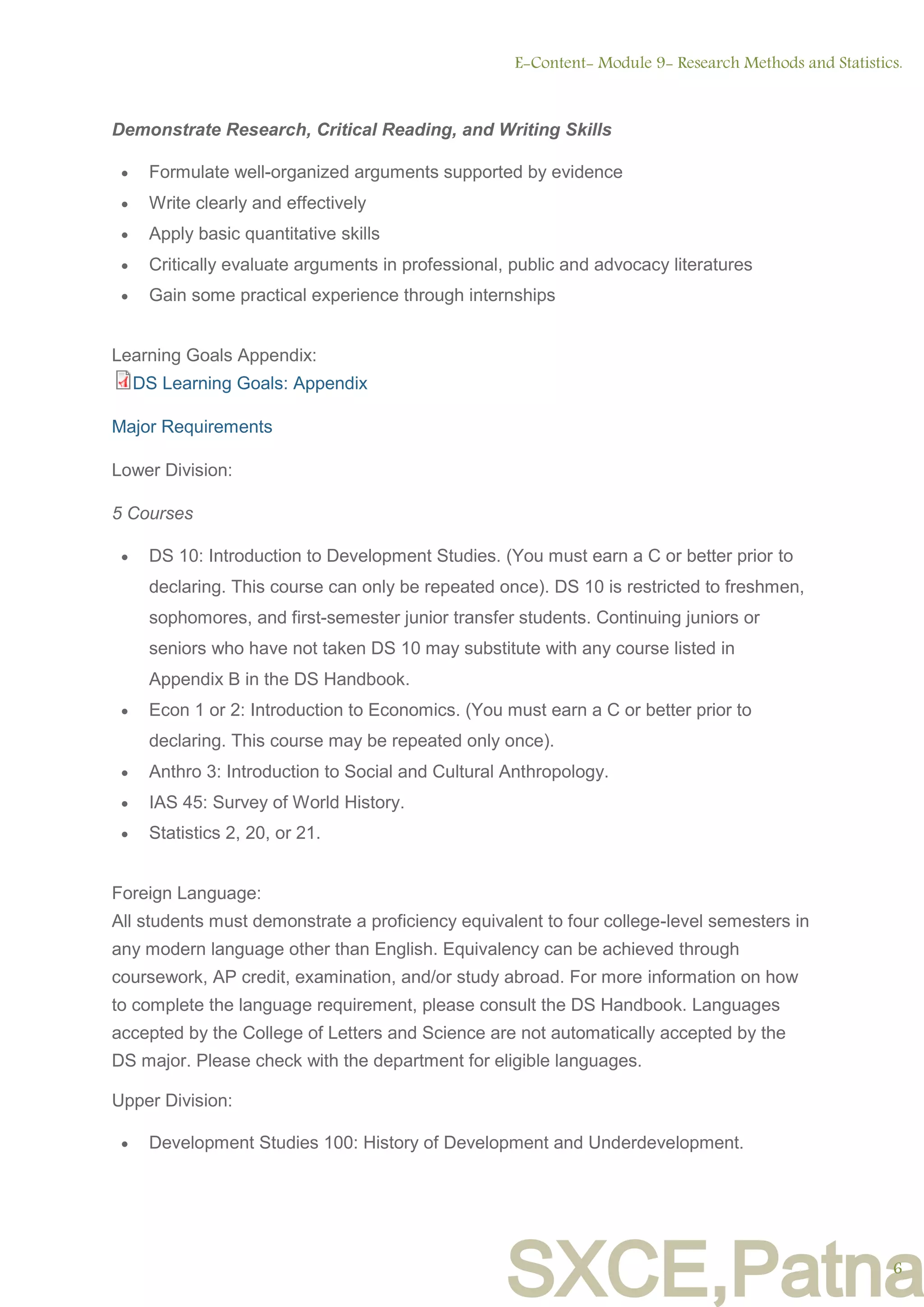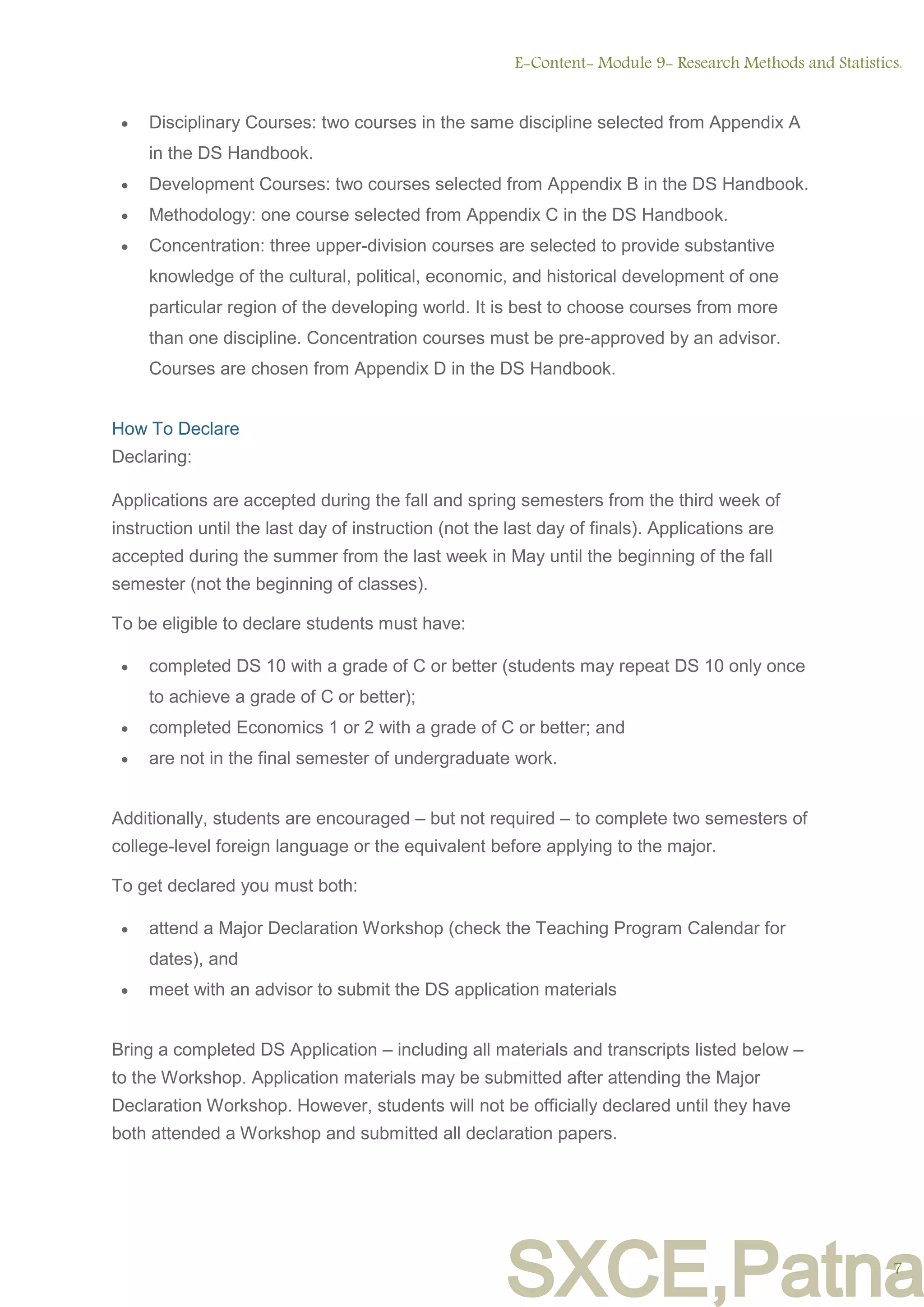This document discusses developmental research and the longitudinal research design. Developmental research studies progressive changes that occur as organisms develop. The two main research designs are cross-sectional and longitudinal.
A longitudinal study observes the same group of participants over time. For example, a study observed children's pretend play every 6 months for 3 years. Longitudinal research allows assessment of stability, identification of trends, and avoids cohort effects. However, it is time-consuming, expensive, and subject to attrition bias if participants drop out.
The document then provides an example of a hypothetical longitudinal study that examines the development of self-inhibition in toddlers, children, and teens. Participants would be observed to see how many chocolate chips
